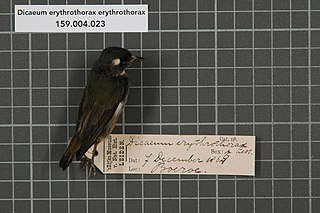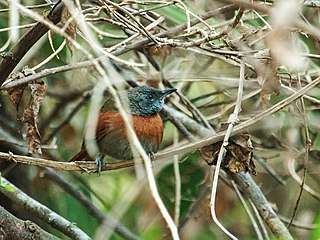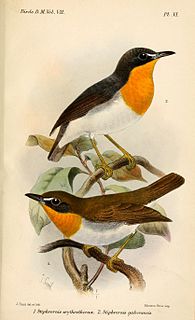
Convolvulaceae, known commonly as the short ludwig or morning glory family, is a family of about 60 genera and more than 1,650 species of mostly herbaceous vines, but also trees, shrubs and herbs, and also including the sweet potato and a few other food tubers.

The Integrated Taxonomic Information System (ITIS) is an American partnership of federal agencies designed to provide consistent and reliable information on the taxonomy of biological species. ITIS was originally formed in 1996 as an interagency group within the US federal government, involving several US federal agencies, and has now become an international body, with Canadian and Mexican government agencies participating. The database draws from a large community of taxonomic experts. Primary content staff are housed at the Smithsonian National Museum of Natural History and IT services are provided by a US Geological Survey facility in Denver. The primary focus of ITIS is North American species, but many biological groups exist worldwide and ITIS collaborates with other agencies to increase its global coverage.

Bhitarkanika Mangroves is a mangrove wetland in Odisha, India, covering an area of 650 km (400 mi) in the Brahmani and Baitarani river deltas.

Synallaxis is a genus of birds in the ovenbird family, Furnariidae.
The Sangha forest robin is a subspecies of the forest robin that is endemic to south-western Central African Republic, but may also occur in adjacent parts of DR Congo, Cameroon and Republic of the Congo. It was only discovered in 1996, and scientifically described in 1999. When recognized as a species by IUCN, it was considered data deficient, but following recommendations by the BirdLife Taxonomic Working Group, IUCN now consider it a subspecies of the forest robin. It has been described as common.

The black-capped lory also known as western black-capped lory or the tricolored lory, is a parrot found in New Guinea and adjacent smaller islands. It is a colourful and relatively robust lory (31 cm). There are seven subspecies, all with green wings, red heads and body around the wing, a black cap, grey-black cere, yellow underwings, and blue legs and belly. Most also have a blue nape and mantle. It remains overall widespread and common, but the subspecies cyanuchen is relatively rare, with fewer than 5000 individuals remaining.

The flame-breasted flowerpecker is a species of bird in the Dicaeidae family. It is endemic to the Maluku Islands in Indonesia. Its natural habitats are subtropical or tropical moist lowland forests and subtropical or tropical moist montane forests. It is restricted to Buru.

The rufous-breasted spinetail is a species of bird in the family Furnariidae. It is found in Belize, El Salvador, Guatemala, Honduras, and Mexico. Its natural habitats are subtropical or tropical moist lowland forests and heavily degraded former forest.

The olive-backed forest robin is a subspecies of the forest robin found in the Gamba Complex in southwest Gabon. It was described in 2008. The olive-backed forest robin can be separated from other subspecies of the forest robin by the combination of its olive upperparts, bright orange throat and chest, and cream-yellow belly. Its song is also distinct from other subspecies of the forest robin. Females are generally duller than males. It has not been evaluated by IUCN, but has been described as locally common.

The western forest robin is a subspecies of the forest robin found at low levels in West African forests from Sierra Leone to Nigeria. It has been placed in the family Turdidae, but is now generally placed in Muscicapidae. It commonly includes the other members in the genus Stiphrornis as subspecies, in which case the common name for the "combined species" simply is forest robin. The western forest robin can be separate from the other members of the genus by the combination of its deep orange throat and breast, white belly, and olive upperparts. It also appears to differ vocally from the other members in the genus, but a comprehensive study on this is lacking. When considered conspecific with the other members from its genus, S. erythrothorax is considered to be of least concern by IUCN. While not rated following the split into several species, it has been described as frequent to locally abundant, and is therefore unlikely to qualify for a threatened category.

The forest robin or orange-throated forest robin is a species of bird from Central and West Africa. It is monotypic in the genus Stiphrornis. It has been placed in the family Turdidae, but is now generally placed in Muscicapidae in the group popularly known as chats. Most taxonomists consider it a single species, but some reviews have recommended recognizing 5 species. It has a total length of around 12 cm, has dark upperparts, and a throat and chest that, depending on the subspecies, is yellow-orange or deep orange.

The Gabon forest robin is a subspecies of the forest robin found at low levels of forests in Cameroon, Gabon and Bioko. In 1999 it was recommended that it should be treated as a separate species instead of a subspecies. IUCN and some other authorities do not recognize the split, and consequently it has not been rated as species separate from the forest robin. However, it has been described as frequent to locally abundant, and is therefore unlikely to qualify for a threatened category.

The eastern forest robin is a subspecies of the forest robin found at low levels in forests from Cameroon and Gabon to DR Congo and Uganda. In 1999 it was recommended that it should be treated as a separate species instead of a subspecies. IUCN and some other authorities do not recognize the split, and consequently it has not been rated as species separate from S. erythrothorax. However, it has been described as frequent to locally abundant, and is therefore unlikely to qualify for a threatened category.

Lytta is a genus of blister beetles in the family Meloidae. There are about 70 described species in North America, and over 100 species worldwide.
Culex erythrothorax is a mosquito species that appears in Southern California. It is also known as the tule mosquito, due to its preference for breeding in tule plants. The species has a brownish-orange color. It is a confirmed vector of West Nile virus.
Rhopalolemma is a genus of cuckoo bees in the family Apidae. There are at least two described species in Rhopalolemma.

Lepidostoma is a genus of bizarre caddisflies in the family Lepidostomatidae. There are more than 150 described species in Lepidostoma.

Hibana gracilis, the garden ghost spider, is a species of ghost spider in the family Anyphaenidae. It is found in the United States and Canada.

Sobarocephala is a genus of flies in the family Clusiidae. There are more than 110 described species in Sobarocephala.













